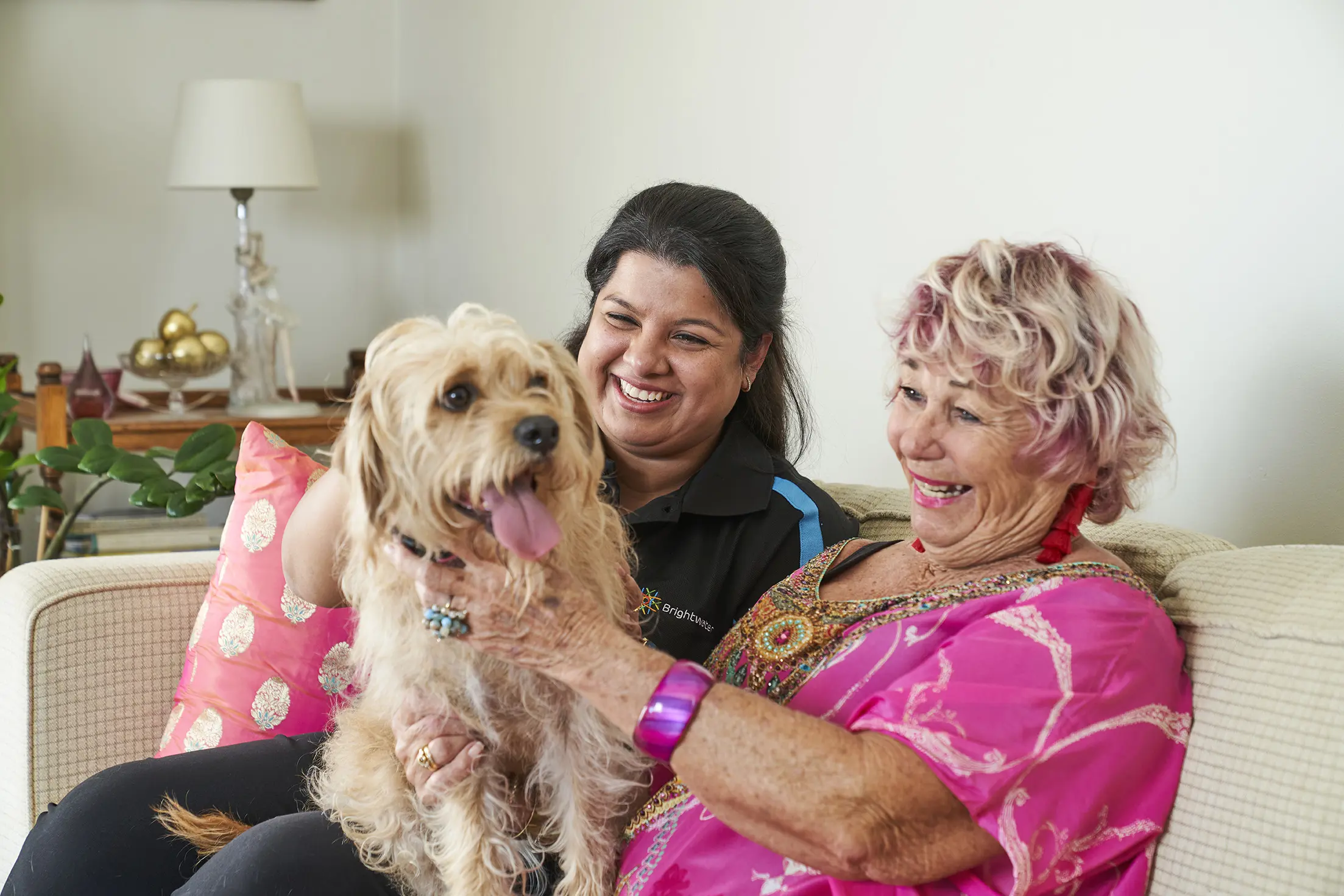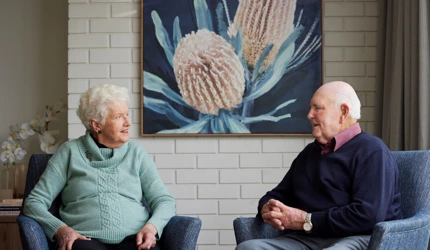If you or someone you love receives in-home care, you may have heard that Australia’s aged care system has changed.
On 1 November 2025, the Australian Government launched the new Support at Home program, replacing Home Care Packages (HCP) for older Australians receiving ongoing support at home.
If you are currently receiving Commonwealth Home Support Programme (CHSP) services, nothing has changed for you yet. CHSP is not expected to move to the new system until at least July 2027.
At Brightwater, we know big changes can raise questions. So let’s walk through what’s changed, why it changed, and what it means for you.
A quick refresher on Home Care Packages
Home Care Packages (often called HCP) were introduced in 2013 to help older Australians stay independent at home with government-funded support.
Under HCP, people were approved for one of four levels of care, depending on their needs. Funding could be used for things like cleaning, personal care, meal preparation, therapy, nursing and more.
While the program helped many people, it also became complicated.
Feedback from carers, families and clients, along with recommendations from the Royal Commission into Aged Care Quality and Safety, led to the creation of the new Support at Home program.

What is the new Support at Home program?
Support at Home is the new national system that began on 1 Novemebr 2025. It replaces Home Care Packages and includes:
- 8 ongoing levels of support
- Short-term pathways for temporary needs
- A Single Assessment Service (SAS) to assess everyone consistently
The goal is to make home care more personalised, easier to navigate and better match your needs.
Support at Home vs Home Care Packages
Here's a look at what's changed between the two programs:
| Feature | Home Care Packages | Support at Home |
| Levels | 4 (Level 1 to 4) | 8 (Classification 1 to 8) |
| Budget Frequency | Annual |
Quarterly |
| Flexibility | Moderate | Highly flexible |
| Unspent funds | Annual rollover | Limited quarterly rollover |
| Provider Transition | Less flexible | Easier to switch |
| Service List | Broad categories | Detailed services |
| Care Planning | Provider-led | Consumer-driven |
| Goal | Provides standardised, basic-to-high support | Provides tailored, timely and adaptable care at home based on individual needs |
The above is based on the Aged Care Decisions table.
How your Support at Home funding works
Your Support at Home budget is your personal care budget, representing the government’s contribution to the supports you’ve been approved for.
Here’s how it works:
- Your budget is released every three months
- You can carry over up to 10% or $1,000 of unspent funds each quarter (whichever is higher)
- 10% of your quarterly budget is allocated to care management (this used to be charged separately under HCP)
The best part of all is that when your needs change, your funding can change too. Meaning your care always fits your life, not the other way around.

Already have a Home Care Package?
Good news! Your care has now moved to the new Support at Home automatically.
If you received (or were approved for) a Home Care Package before 12 September 2024, you are considered a “grandfathered client.”
What does “grandfathered” mean?
Being a grandfathered client simply means:
- Your funding and services remain stable under Support at Home
- You are covered by the government’s “no worse off” policy, meaning you will not pay higher co-contributions compared to what you paid under HCP for the same types of support
- You will not need to undergo a new assessment to transition
You may have a review under the new model in the future, especially if your needs change. We'll let you know when that happens and support you every step of the way.
You can learn more on the My Aged Care website or by downloading the Government's Preparing for Support at Home checklist.
If you are applying for home care for the first time
If you applied for home support after 1 November 2025, you enter directly under the Support at Home system.
Your funding is based on the new classification levels, which are designed to:
- Match support to your individual needs
- Offer more flexibility as your needs change
- Make fees and funding easier to understand
How Support at Home assessments work
You now begin your journey through My Aged Care, and your assessment is carried out by the Single Assessment Service (SAS).
After meeting with an assessor, you receive:
- a care level
- a priority rating (High, Medium or Standard)
You’re also supported by a Care Partner, who helps create your care plan, explains your budget, coordinates services and checks in regularly as your needs evolve.

The three types of support you can get at home
You'll still have access to the same types of services you have now. They're just grouped more clearly into three categories:
Clinical Care
Nursing, allied health and medication support
Independence
Personal care, social support, respite care and transport
Everyday Living
Help with things like cleaning, shopping, meals and more.
If you only need help for a short period, you may be approved for a short-term pathway.
Short-term help when you need it most
Sometimes you just need a hand for a few weeks, and that's perfectly okay.
Short-term pathways are available now for times when you need extra support, such as recovery after illness or injury. These include:
- Restorative Care Pathway – to help you regain confidence and independence after illness or injury.
-
Assistive Technology & Home Modifications – for equipment or home changes to make your home life safer and easier to cope with.
-
End-of-Life Pathway – compassionate support at home during later stages of life.
These have replaced the Short-Term Restorative Care (STRC) program and offer more flexibility to move between short-term and ongoing support.
New terms you might notice
If you’re used to Home Care Packages, you’ll see a few new words under Support at Home:
| Home Care Packages | Support at Home | Explanation |
| "Package" | "Level" or "Classification Level" | Funding now matches your needs, not a fixed package |
| "Coordinator" | "Care Partner" |
Care Partners support your care management and services |
| "Activities of daily living" | "Everyday living" | Simpler way to describe daily supports |
Hear from one of our clients
We’ve already supported clients like Silva, who had one simple goal: to walk on the beach again. With the right care team and a plan built around her goals, she made it happen.

How Brightwater can help
We know this is a big change, and it can take a bit to get your head around. That’s why our team at Brightwater is here to make the transition as smooth as possible.
We can help you:
- Explain what the new system means for you
-
Help you understand your funding and level of care
-
Support you through your transition to SaH
-
Make sure your services continue smoothly and stress-free



